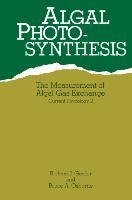
-
 Anglický jazyk
Anglický jazyk
Algal Photosynthesis
Autor: Richard Geider
The algae are a diverse group of organisms with forms that range in size from less than a micron in diameter to over ten meters in length. Small « 1 JLm diam) unicellular forms dominate the open waters of the oceans and large lakes. Large multicellular forms... Viac o knihe
Na objednávku
49.49 €
bežná cena: 54.99 €
O knihe
The algae are a diverse group of organisms with forms that range in size from less than a micron in diameter to over ten meters in length. Small « 1 JLm diam) unicellular forms dominate the open waters of the oceans and large lakes. Large multicellular forms often form a large component of the autotrophic biomass of shallow waters at the periphery of lakes and oceans but have also been found on seamounts in clear open ocean waters at depths up to several hundred meters (Littler and Littler, 1985). Phytoplankton in the sea probably account for more than 50% of global photosynthesis, although there is considerable uncertainty about this estimate. In addition, many symbiotic associations between unicellu lar algae and heterotrophic or autotrophic organisms have been identi fied, and algae can be found in a diverse range of terrestrial environ ments, ranging from polar to desert regions. The most important common biochemical attribute that unites the algae is their ability to split water, producing molecular oxygen during photosynthesis and concomi tantly assimilating carbon dioxide. This attribute is shared with the terres trial plants, cyanobacteria and chloroxybacteria. Although vascular plants are excluded from this review, we employ a broad definition of algae that includes the photosynthetic, oxygenic procaryotes. Measurements of gas exchange are fundamental to most biochemical, physiological and ecological investigations of the algae.
- Vydavateľstvo: Springer US
- Rok vydania: 2013
- Formát: Paperback
- Rozmer: 229 x 152 mm
- Jazyk: Anglický jazyk
- ISBN: 9781475721553









 Ruský jazyk
Ruský jazyk 


